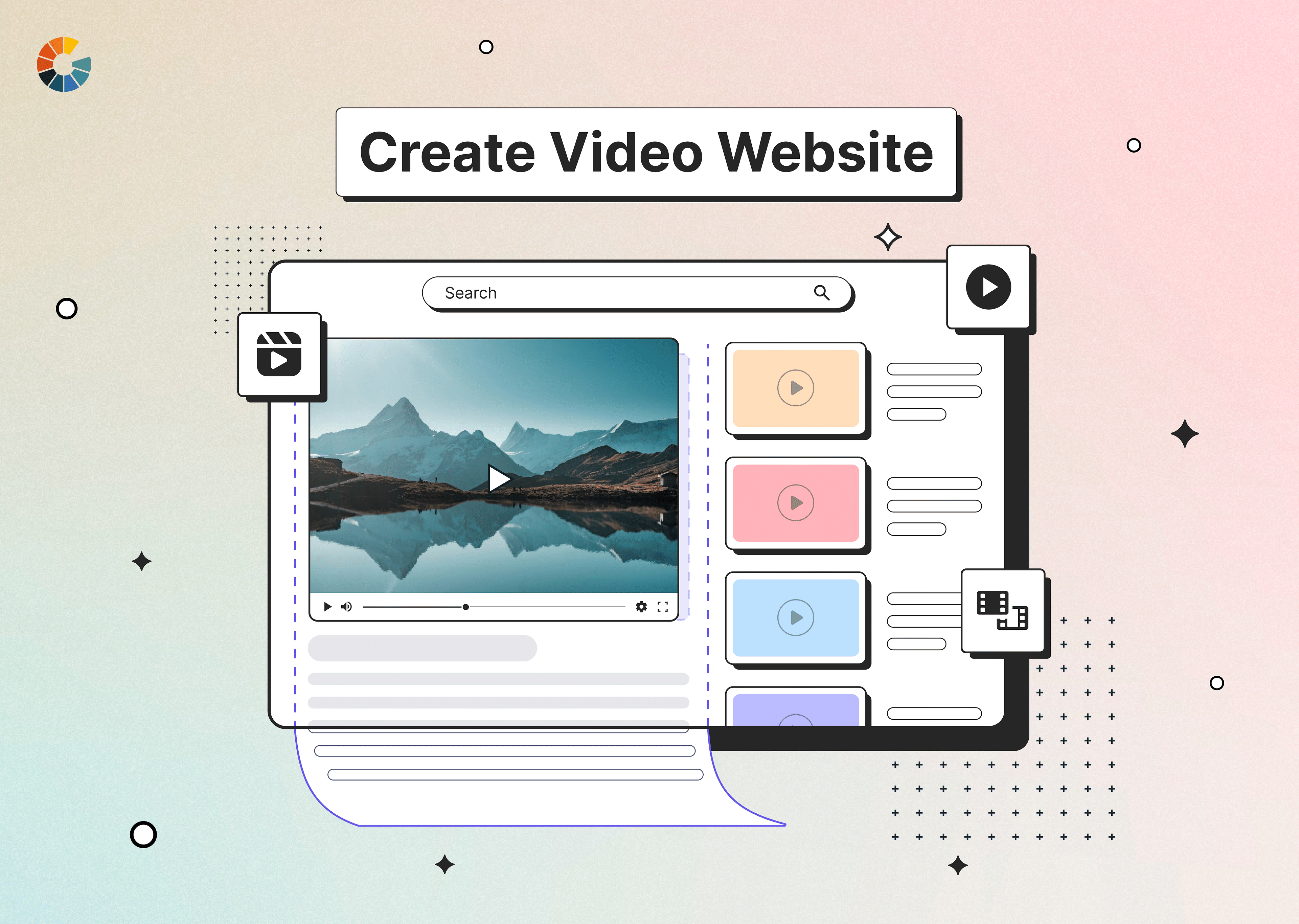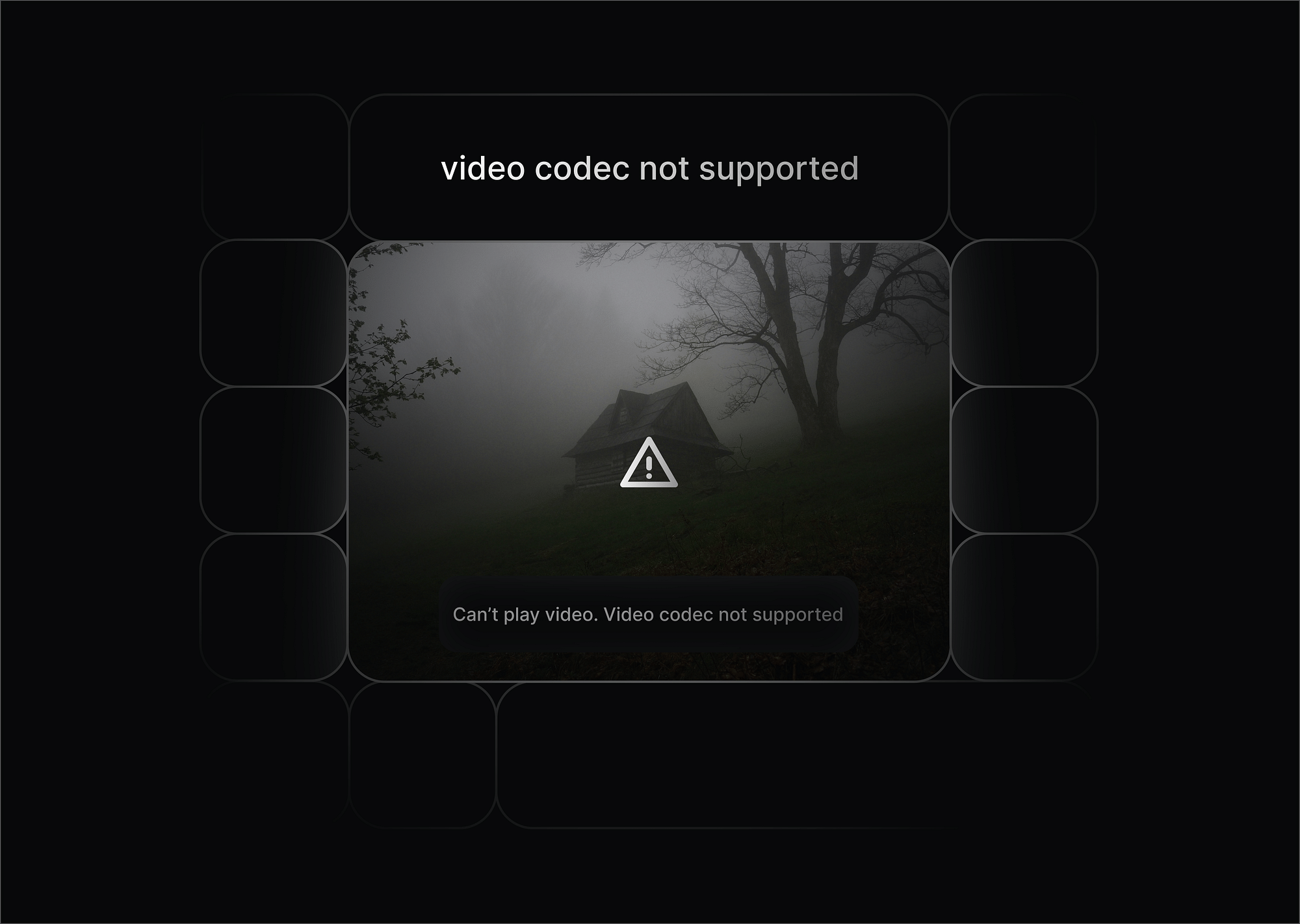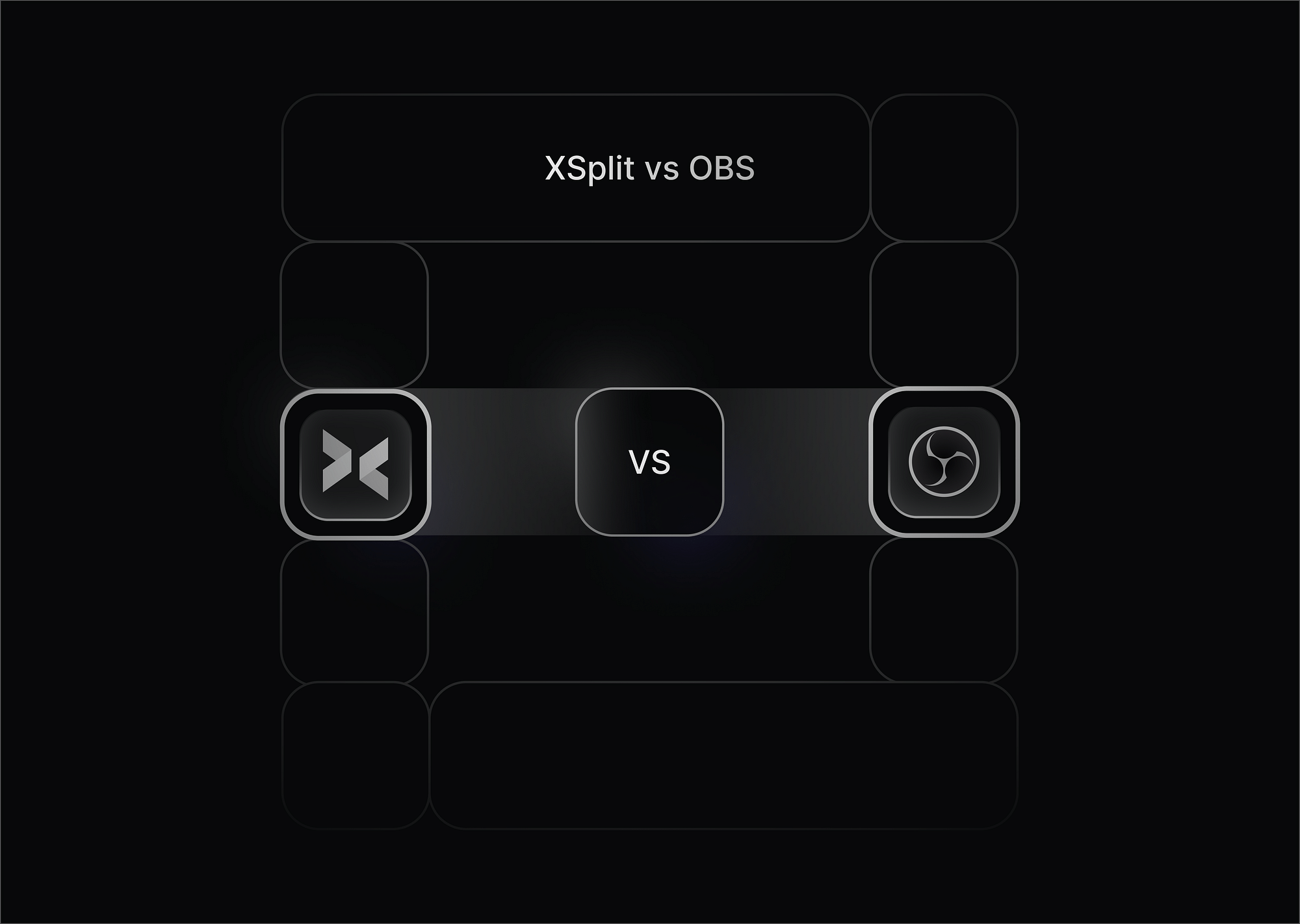Video content is a powerhouse in the digital world, with research showing that websites incorporating video can increase user engagement by up to 80%. To create a video website, you will face a lot of challenges, such as managing large file sizes, ensuring smooth playback across devices, and protecting content from piracy. Here are some more of such challenges:
- Bandwidth and hosting: Video content requires significant bandwidth and storage space.
- User experience: Ensuring smooth playback on all devices and internet speeds.
- Content management: Organizing and categorizing videos for easy access.
- Security: Protecting videos from unauthorized access and piracy.
- Monetization: Finding effective ways to monetize video content.
Let’s help you get a hold of each of these challenges so that you can create a video website that is well-optimized at your disposal!
Planning Your Video Website
Here’s how you can create a well-optimized video website, starting from step 1 – pre-building!
Pre-building Stage: Laying It All Out and Making a Plan
The pre-building stage is crucial for laying a solid foundation for your project. It encompasses several key steps:
Defining Your Video Website’s Niche
- Select Your Content Type: Decide on the type of videos you will offer. This could range from educational tutorials, fitness workouts, entertainment and comedy to specialized content like cooking or technology reviews. Your content type should align with your interests or expertise and be in demand in the market.
- Identify Your Target Audience: Knowing who you are creating content for is essential. Different demographics have varied preferences regarding video content, platform usability, and engagement methods. For instance, younger audiences might prefer fast-paced entertainment or interactive educational content, while professionals may seek in-depth tutorials or seminars. Consider factors such as age, interests, geographical location, and internet access habits.
Features and Functionality
Once you have a clear understanding of your niche and audience, the next step is to decide on the features and functionality your website will offer. This phase is critical for determining how your website will stand out from the competition and how it will serve your audience's needs.
- Core Features: Consider what core features are essential for your video website. This could include:
- Video Playback Quality: High-definition, smooth video playback is crucial for user satisfaction.
- Mobile Compatibility: With the increasing use of smartphones for video consumption, ensuring your website is optimized for mobile devices is essential.
- Interactive Elements: Depending on your content type and audience, interactive elements like quizzes (for educational content), live polls (during live streams), or comment sections for community engagement might be vital.
- User Profiles: If your website encourages user interaction, consider allowing users to create profiles. This can enhance community building and offer personalized content recommendations.
- Live Streaming: For real-time engagement, especially for events, Q&A sessions, or interactive workshops, live streaming could be a pivotal feature.
- Security and Privacy: Ensure that your website has robust security measures to protect user data and content. Features like secure login, data encryption, and privacy controls are important.
Prioritize Based on Your Needs and Resources
- Feasibility Analysis: Assess the technical and financial feasibility of incorporating the desired features. Prioritize features based on your resources, potential ROI, and the impact on user experience.
- Phase Planning: It may not be possible to launch your website with every feature from the start. Consider a phased approach where you start with essential features and gradually introduce more based on feedback and additional resources.
- Vendor and Platform Selection: Decide whether you'll build your platform from scratch or use existing solutions like CMS platforms (WordPress, Drupal) combined with video hosting services (Gumlet, Vimeo, YouTube). Each option has its trade-offs in terms of customization, cost, and development time.
Building Your Video Website
Once the pre-building stage is settled, the next crucial stage comes, which is actually building your well-optimized video website. But before that, a crucial challenge comes in – how do we go about building the website?
At this point, you have a few options to choose from in terms of how you’d want to proceed. You can either host the website on your own server, i.e., self-hosting or look for different video hosting platforms. Let’s see what all this means!
DIY Option: Self-Hosted Website
Opting for a DIY approach to create a self-hosted video website involves a significant level of technical knowledge and expertise. This route allows for unparalleled customization and control over your website's functionality, appearance, and hosting environment. However, it's essential to understand the complexities and challenges associated with building and maintaining a site from scratch.
Technical Skills Required
- Web Development: Proficiency in web development languages such as HTML, CSS, JavaScript, and server-side languages like PHP or Python is fundamental. These skills are crucial for creating the website's front end (what users interact with) and back end (server, database, application logic).
- Database Management: Knowledge of database systems (e.g., MySQL, PostgreSQL) is necessary for storing and managing user data, video metadata, and other content.
- Server Administration: Setting up and managing a web server (Apache, Nginx) and dealing with server-side configurations, security updates, and optimization for video hosting.
- Video Processing: Understanding video encoding, compression, and streaming technologies is critical to ensure high-quality video playback across various devices and bandwidth conditions.
Challenges of Self-Hosting
- Maintenance and Security: A self-hosted website requires regular maintenance, including software updates, security patches, and backups. Ensuring data security and protecting against cyber threats add layers of complexity.
- Scalability: As your video website grows in popularity, scaling resources to accommodate increased traffic and data load can be challenging without significant technical know-how.
- Cost: Initial and ongoing costs for server hardware, bandwidth, and software licenses can be substantial, especially as your site scales.
Why a Hosting Platform Might Be Better
Platforms like WordPress and Wix offer a more accessible entry point for creating a video website without the steep learning curve associated with self-hosting. These platforms provide:
- Ease of Use: User-friendly interfaces, pre-designed templates, and drag-and-drop builders make site creation accessible to non-developers.
- Integrated Hosting Solutions: These platforms often come with hosting services, removing the need to manage server hardware and software.
- Security and Maintenance: Automatic updates, security monitoring, and technical support alleviate the burdens of site maintenance and security management.
- Extensibility: Plugins and extensions allow for adding features like video galleries, user profiles, and more without deep coding knowledge.
Regardless of whether you choose a self-hosted solution or a website builder platform, leveraging third-party video hosting platforms can significantly simplify video delivery. Platforms such as Gumlet, Vimeo, or YouTube handle video encoding, storage, and delivery, ensuring optimal playback quality across devices and internet speeds. This allows you to focus on content creation and user experience without worrying about the technical intricacies of video hosting.
Using a Video Hosting Platform
A video hosting platform is a strategic choice for content creators looking to launch a video website without the complexities of self-managed systems. These platforms offer ease of use, affordability, and features that enhance the video hosting experience, making Gumlet a popular choice.
Ease of Use and Affordability
Video hosting platforms are designed with simplicity in mind, enabling creators to upload, manage, and distribute video content without needing in-depth technical knowledge. Here's how they simplify the process:
- Simplified Upload and Management: Creators can easily upload videos, often in any format, and the platform takes care of the rest, including transcoding videos to ensure compatibility across devices and connection speeds.
- Built-in Player: These platforms provide a customizable video player that can be easily embedded into any website, ensuring a seamless viewing experience for your audience.
- No Need for Infrastructure Management: Hosting videos can be bandwidth-intensive, requiring robust server capabilities. Video hosting platforms eliminate the need for creators to manage their own servers or worry about scaling issues as viewership grows.
Gumlet, for example, offers competitive pricing models that scale with your usage. This makes it accessible for startups and individual creators while also being capable of serving the needs of larger enterprises.
Key Features and Other Benefits
Beyond the basics, video hosting platforms offer a range of features designed to optimize the video experience and enhance viewer engagement. Some key features include:
- Adaptive Bitrate Streaming: This ensures that videos play smoothly regardless of the viewer's internet speed by dynamically adjusting video quality.
- Global Content Delivery Network (CDN): Videos are served from servers located around the world, reducing latency and speeding up load times for a global audience.
- Analytics: Insightful analytics allow creators to understand viewer behavior, video performance, and engagement levels, enabling data-driven decisions to improve content.
Gumlet distinguishes itself with additional benefits tailored to the needs of modern video websites:
- Customization Options: Gumlet allows extensive customization of the video player, enabling brands to align the look and feel of the player with their website design and branding. This includes control over player controls, colors, and logos.
- Easy Integration: Gumlet's API and comprehensive documentation make it easy to integrate video hosting into your website, regardless of the underlying technology or platform you're using.
- Optimization Features: With features like per-title encoding, Gumlet optimizes video file sizes without compromising on quality, ensuring faster load times and a better viewing experience.
Using a video hosting platform like Gumlet ultimately provides a streamlined, efficient path to delivering high-quality video content to your audience. It not only simplifies the technical demands of video hosting but also offers the tools and features needed to engage viewers, analyze performance, and scale your video content strategy effectively.
Essential Features for Creating a Video Streaming Platform
Now that we’ve understood the intricacies of the pre-building and the building stage let’s look at some important features your well-optimized video website surely needs to have!
Ensure Your Videos are Protected from Piracy
Protecting your video content is crucial to safeguard your intellectual property and ensure revenue and viewership aren't siphoned off by unauthorized channels. Implementing robust video protection methods is essential, and platforms like Gumlet make this process straightforward and effective.
Video Protection Methods
Several techniques can be employed to protect your videos from piracy, each serving to deter unauthorized access or distribution:
- Encryption: Encrypting video files ensures that they cannot be played without the correct decryption key, which is only provided to authorized viewers. This method is highly effective at preventing unauthorized access.
- Watermarking: Adding a visible or invisible watermark to your videos can deter piracy by making it easier to trace the source of leaked content. Watermarks are typically unique to each user or session, adding an extra layer of security.
- Access Control: Implementing strict access control measures, such as requiring user authentication before accessing content, helps ensure that only authorized users can view your videos.
- Domain Restrictions: Restricting video playback to specific domains prevents your videos from being embedded on unauthorized websites, ensuring viewers must visit your site to watch your content.
- Dynamic Token Authentication: This involves generating a unique token for each viewing session, which is verified by the server before the video can be played. It's an effective way to prevent link sharing and unauthorized access.
How Gumlet Facilitates Video Protection
Gumlet offers a comprehensive suite of tools and features designed to protect your videos with minimal effort on your part:
- Easy-to-Implement Encryption: Gumlet simplifies the process of encrypting your video content, ensuring that only authorized viewers can decrypt and view your videos. The platform handles the complexities of encryption and decryption transparently, providing a seamless experience for both the content creator and the audience.
- Custom Watermarking: With Gumlet, adding custom watermarks to your videos is straightforward. You can choose the type, position, and appearance of your watermark, making it an effective deterrent against unauthorized sharing.
- Robust Access Controls: Gumlet allows you to set up access controls easily, ensuring that only authenticated users can access your content. Whether through user login systems or token-based authentication, Gumlet provides the flexibility to implement the level of security that best suits your needs.
- Domain-Level Security: You can configure domain restrictions directly through Gumlet, ensuring your videos cannot be embedded or played outside of your authorized domains. This adds an additional layer of protection against content theft.
Analytics and Monitoring of the Video Website’s Performance
Analytics and performance monitoring tools provide invaluable insights into viewer behavior, video performance, and overall website health, enabling you to make informed decisions to enhance user experience and content strategy.
Importance of Tracking Performance Metrics
- Viewer Engagement: Metrics such as play rate, average watch time, and video completion rate help you understand how engaging your content is. This insight allows you to tailor future videos to better meet your audience's preferences.
- User Behavior: Analytics can reveal patterns in how users navigate your site, what content they prefer, and where they drop off. This information is crucial for optimizing site layout, video placement, and navigation to improve user experience.
- Technical Performance: Monitoring load times, buffering rates, and playback issues help ensure your videos are delivered smoothly to all users, regardless of their device or internet speed.
- Content Strategy: By analyzing which videos perform best, you can refine your content strategy to produce more of what your audience loves, potentially increasing viewership and engagement.
Gumlet Analytics
Gumlet Analytics offers a comprehensive suite of analytics tools designed specifically for video content, enabling creators to dive deep into video performance metrics. Here's how Gumlet can enhance your understanding of video performance:
- Detailed Engagement Data: Track how viewers interact with your videos, including play rates, pause rates, and completion rates. This data helps identify what content resonates most with your audience.
- Quality of Experience Metrics: Gumlet provides insights into buffering times, video start times, and errors, allowing you to optimize for the best possible viewer experience.
- Geographic and Device Insights: Understand where your audience is coming from and what devices they're using, enabling you to tailor your content and playback performance to your audience's needs.
- Custom Events: Track custom events that are specific to your videos or website, such as interactions with call-to-action buttons or links within videos.
How to Monetize Your Video Website?
Here are some effective monetization strategies, including both traditional and innovative approaches:
Subscriptions
Offering tiered subscription plans is a proven method for generating steady revenue. This model allows viewers to access your content library for a recurring fee. To cater to different audience segments, consider offering various tiers based on access levels or additional perks:
- Basic vs. Premium Plans: Basic plans might include access to standard content with ads, while premium plans offer ad-free viewing and access to exclusive content.
- Family or Group Subscriptions: These plans allow multiple users to access content under a single subscription, often at a discounted rate.
- Freemium Models: Provide a base level of free content, encouraging users to upgrade to a paid subscription for premium features or content.
Advertising
Incorporating ads into your video content or website is another way to generate revenue. Tailoring the ads to your audience's interests ensures higher engagement rates:
- Pre-roll, Mid-roll, and Post-roll Ads: These video ads play before, during, or after your content, respectively.
- Banner and Display Ads: Placed around your video player or on your website, these can be a less intrusive way to include advertising.
- Sponsored Content: Partner with brands to create content that integrates their products or messages naturally into your videos.
Pay-per-view
For exclusive or premium content, such as special events, workshops, or premium video series, a pay-per-view model allows viewers to purchase access to individual pieces of content:
- Live Streams: Charge for virtual attendance to live events or performances.
- Special Releases: Offer early or exclusive access to new content for a fee.
Partnerships
Collaborating with brands or other content creators can open up additional revenue streams:
- Brand Sponsorships: Partner with brands to feature their products or services in your videos.
- Affiliate Marketing: Earn commissions by promoting products or services and including affiliate links in your video descriptions or on your website.
- Content Collaborations: Team up with other creators to expand your audience reach and cross-promote content.
Additional Monetization Strategies
- Merchandising: Sell branded merchandise related to your content or niche. This can include apparel, accessories, or digital products like eBooks or courses.
- Crowdfunding and Donations: Platforms like Patreon allow fans to support your work directly through one-time or recurring donations, often in exchange for exclusive content or perks.
- Design a crowdfunding page that effectively showcases your goals and entices supporters with clear reward tiers.
- Licensing: License your content to other platforms or media outlets. This can be particularly lucrative for unique or high-quality content that appeals to niche audiences.
Create a User-Friendly Design
A well-designed website not only attracts visitors but also retains them, encouraging exploration and interaction with your content. Here are key elements and best practices to consider when designing your video website:
Intuitive Navigation and Clear Categories
- Simplified Menu Structure: Your website's navigation should be intuitive and straightforward, allowing users to find the content they're looking for with minimal effort. A cluttered or complex menu can be frustrating and lead users to leave your site.
- Well-Defined Categories: Organize your video content into clear, easy-to-understand categories. This could be based on genre, content type, popularity, or any other criterion that makes sense for your audience.
- Effective Search Functionality: Incorporate a robust search feature that allows users to quickly find specific videos using keywords or phrases. Consider features like auto-complete and filters to enhance the search experience.
Best Practices for Organizing Video Content
- Tags and Metadata: Use tags and detailed metadata for each video to improve searchability and categorization. This includes descriptive titles, summaries, and relevant keywords.
- Playlists: Curate playlists to guide users through a series of videos on a particular topic or theme. Playlists can help keep users engaged by automatically playing the next relevant video.
- Recommended Videos: Implement a recommendation system that suggests videos based on the user's viewing history or preferences, encouraging further exploration.
Designing and Branding
- Consistent Branding: Ensure that your website's design aligns with your brand identity, including colors, logo designs, fonts, and imagery. Consistent branding across all pages and videos strengthens brand recognition and trust.
- Visual Appeal: Use high-quality images, videos, and typography to make your site visually appealing. A well-designed homepage with featured content can make a strong first impression.
- Responsive Design: With the increasing use of mobile devices to access online content, it's crucial that your website is responsive and provides an excellent viewing experience on any screen size.
Customized Video Player with Gumlet
- Brand-aligned Video Player: Gumlet allows you to customize the video player to match your website's branding, including colors and logos. This consistency enhances the professional appearance of your platform and reinforces your brand identity.
- User Experience Features: Customize the player with user-friendly controls, such as playback speed adjustment, quality selection, and subtitles, to improve the viewing experience.
- Adaptability: Ensure the player is adaptable to various screen sizes and resolutions, maintaining functionality and aesthetics across devices.
Optimize for Speed and Performance
Fast loading times are crucial for keeping your audience engaged. A delay of just a few seconds can significantly impact user satisfaction, with studies showing that users are likely to abandon a site that takes too long to load. For video content, this is even more critical, as buffering or delays in video playback can ruin the viewing experience. Utilize Gumlet's optimization features like adaptive bitrate streaming and global CDN integration to ensure your website performs efficiently.
Work on Your Website & Video SEO
Search Engine Optimization (SEO) is vital for increasing visibility and attracting more viewers to your video website. Implementing effective SEO strategies can significantly improve your website's ranking in search engine results.
- Keyword Research: Conduct thorough keyword research to understand what terms your target audience is searching for. Incorporate these keywords naturally into your video titles, descriptions, and tags to improve visibility.
- Optimizing Video Titles, Descriptions, and Tags: Ensure your video titles are descriptive and include relevant keywords. Similarly, craft compelling descriptions that provide context and include calls to action. Use tags to include additional relevant keywords.
- Alt Text and Structured Data: For videos embedded on your site, use alt text to describe the video content, helping search engines understand and index your content more effectively. Implementing structured data (schema markup) can also enhance how your videos are displayed in search results, including rich snippets.
Gumlet facilitates SEO-friendly video embedding, which makes it easier for search engines to crawl and index your video content. Features include:
- Structured Data Support: Gumlet's embedding options are designed to work seamlessly with structured data, helping search engines better understand and rank your video content.
- SEO-Friendly Embedding: With Gumlet, embedding videos on your website is optimized for SEO, ensuring that your videos contribute positively to your site's overall SEO performance.
Make Your Website Mobile-Optimized
- Responsiveness: Ensure your website's design is responsive, meaning it automatically adjusts to fit the screen size and resolution of any device, providing an optimal viewing experience on both desktops and mobile devices.
- Mobile Speed: Mobile users often rely on cellular networks, which can be slower than wired connections. Optimize your website's speed for mobile users by compressing images, leveraging caching, and minimizing the use of heavy scripts.
Mobile optimization is not just about aesthetics; it's also crucial for SEO, as search engines like Google prioritize mobile-friendly websites in their rankings. Implementing these strategies will help you provide a superior user experience, regardless of how your audience accesses your site, and ensure your content ranks well in search results.
Conclusion
To create a video website that is well-optimized, you have to carefully plan, figure out the right tools, and focus on user experience. Platforms like Gumlet can significantly ease the process, enabling you to deliver high-quality video content effectively.
FAQs
What are the best video website builder tools?
WordPress, Wix, and Squarespace, combined with video hosting platforms like Gumlet.
How can I ensure my video website loads quickly?
Utilize video optimization features offered by platforms like Gumlet, including adaptive bitrate streaming and CDN integration.
I'm a beginner; what platform is easiest for creating a video website?
Wix and Squarespace offer user-friendly interfaces for beginners.
What is the best video protection method for my video website?
Encryption and secure token delivery are effective; platforms like Gumlet can simplify this.
How to make a website like YouTube?
Focus on user-generated content and robust search and categorization features, and consider using a dedicated video hosting solution to handle the technical demands.




